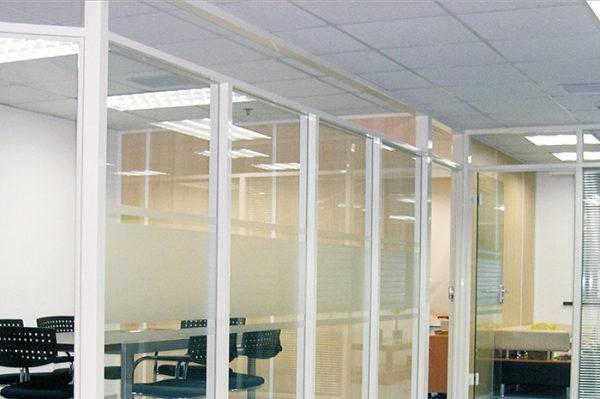What are the production methods of vacuum fireproof glass
Process 1 Scribing: select different types of original glass according to the needs, and cut and scribing according to the relevant size requirements;
Process 2 Cleaning: clean the original pieces of glass cut for standby, and stack them in pairs for standby;
Process 3 Make a support: select one piece of glass for each group and make a support on the surface of the glass. First, use screen printing technology to make the corresponding screen plate according to the standard, and print the diameter on the surface of the glass Φ For 0.3 ~ 0.5mm points, the value range of horizontal dispersion spacing between points is 25mm ~ 35mm, the value range of vertical dispersion spacing between points is 25mm ~ 35mm, and the point height is controlled at 0.15 ~ 0.3mm. The raw material of the point is quartz sand filtered by 150 ~ 300 mesh filter screen, and then the glass at the supporting point is heated at 580 ℃ ~ 650 ℃ to fix the support on the surface of the glass;

Process 4 Release getter: put another piece of glass in a group without support point, set one or more grooves (or set the diameter) with length of 50mm and width of 2mm at 40mm away from the edge Φ 5mm, 2mm deep hole), and put the getter between the two pieces of glass before compounding.
Process 5 Overlap: take the glass in process 4 as the substrate, place 15mm wide low melting point lead glass along the edge around it, then cover the original glass in process 3 on the original glass placed with low melting point lead glass, and ensure that the support point is between the two glasses. Then put the composite glass into the furnace and heat it to the melting temperature required by the low melting point lead glass, Make the lead glass blend the two glass sheets together;
Process 6 Spare time: open the glass that has been blended together in the process 5 from the side to the size of the diameter Φ 3mm ~ 6mm hole, and pass through the fusion seal layer to the vacuum layer, and then insert a glass tube with the same diameter and aperture at the hole to extract the air in the window interlayer, which can be pumped below 0.1pA by vacuum pump;
Process 7 Fusion sealing: melt the glass tube inserted into the vacuum glass treated to the vacuum state through process 6 with a high-temperature flame, seal it and separate it from the vacuum pump to obtain the vacuum fireproof glass.
Article source: fireproof glass http://hanzhicheng.cn/
-
05-04
What are the problems of composite fireproof glass in fire fighting
Some supervisors mistakenly think that the door made of fireproof glass is the fireproof door, the partition made of fireproof glass is the fireproof glass partition, and the window made of fireproof
-
04-12
Fireproof glass door: how to ensure that the fireproof door can play a role in critical times
How to ensure that the fire door can give full play to its ideal effect in critical time?1. Select appropriate typesAccording to the relevant specific introduction of fire doors, we can know that at t
-
02-17
Where is the fireproof glass generally installed
(1) the fireproof glass is generally installed on something. It may not be checked from time to time before installation. If the warpage, unsightness and glass hazards of the window edge and window ar
-
10-30
How to distinguish the quality of single fireproof glass?
1. Equipment conditions:No matter how to make a single piece of fireproof glass, it can't be done without some equipment, so if the manufacturer doesn't have the equipment, it can't mak
 中文
中文 English
English